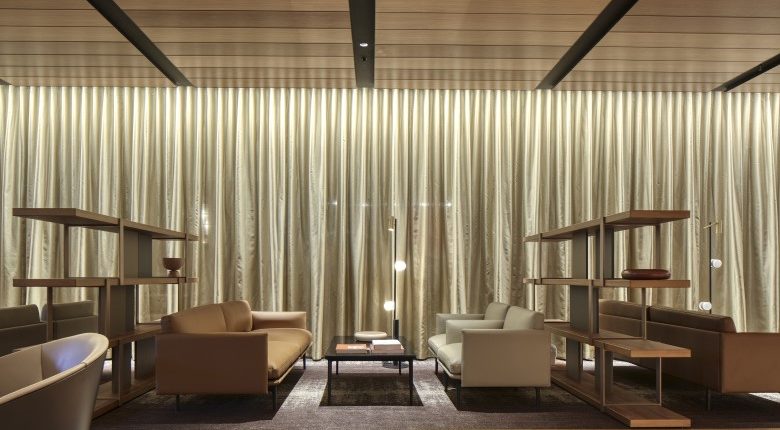- Entry was made less intimidating by repositioning of reception
- Intuitive use of lighting reduced need for signage
- A relaxed atmosphere makes staying a while more conducive
Perth’s iconic Parmelia Hilton hotel has undergone a series of minor renovations since its opening in the 1960s.
However, in late 2017 COX Architecture, along with their client, Hawaiian, considered how the hotel could be re-imagined – both physically and more broadly in the contemporary urban fabric in which it is located.
The renovation process has not only created engaging public spaces within the hotel but also greater engagement with the city’s urban fabric via increased permeability and additional connections to surrounding locations.

In particular, the hotel now connects not only to Mill Street and St Georges Terrace, but also a previously unknown rear laneway, which is now home to the Hawaiian offices and a community coffee shop.
Direct connections have also been created to Brookfield Place and surrounding office towers, where many of the hotel’s guests do business – opening and connecting an entire city block behind the scenes. As architect Bret White said:
“The project now contributes to the city’s urban fabric beyond the building itself, with emphasis on pedestrian movement, and new pathways in our city”.
Architect, Bret White
The hotel entrance has been designed to offer respite on entry and typical hotel features have been softened; reception is positioned to one side to create a less intimidating arrival, for example. Visitors are presented with a place to pause and catch their breath, where a comfortable seating area with lowered ceilings invites guests to sit and admire the local artwork inspired by the bold landscape of Western Australia.

The hotel theme includes cool tones that reflect the coastal landscape, with the blue hue of the reception desk glowing as light from a series of bronze pendants cascades onto its surface and an additional strip light highlights it from below.
This clever use of lighting provides a wayfinder for visitors, as light has not only been used to create ambience but also to reduce the need for physical signage.
A delicate leaf frit pattern on the central skylight creates dappled light that filters onto the marble floor. Air vents are meticulously encased, and hidden light sources decorate the bronze mirrors that line the entrance columns.

In stark contrast, off to one side of the lobby, in-house restaurant Samuel’s is designed in dark tones of timber, bronze, and concrete, accentuated by diffused light creating an intimate ambience while glazing provides natural light and a view out onto the leafy Mill Street beyond.
Back to the foyer, bronze mirrors on the lobby columns create golden light, adding warmth and elongating the space, while the perimeter of the columns has been used as an opportunity for relaxed seating.
Adjacent to the columns an intimate workspace, mainly constructed from local timber and other warm tones mimic the earthy landscape thereby creating a private space to catch up on emails or prepare for the day’s meetings.
A subtle ramp guides visitors towards the executive lounge which invites guests to stay longer, with its warm colour pallet and material choices. Sandy leather couches invite you to melt into them, the diffused warm-toned lighting offers an intimate and relaxed ambience, while a series of open dividers allow for privacy and allocates spaces for small groups.
In this project, architecture and detailing are applied to create beautiful interior spaces for people to linger. While beyond the hotel’s doors it’s all about connection, engaging the visitor in the city’s broader urban landscape.
~~
Written by Millie Gillespie. Photography by Ryan North & Robert Frith.
This story was originally published in The Architect magazine, an official publication of the Australian Institute of Architects. It has been edited for republication by The Property Tribune.
The Property Tribune thanks the Australian Institute of Architects for the opportunity to republish the work, and shine a light on Australian architecture.








